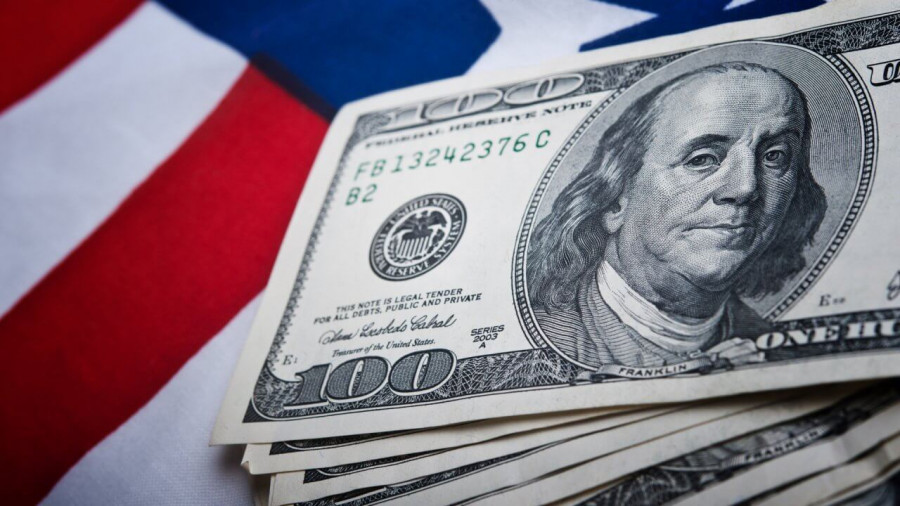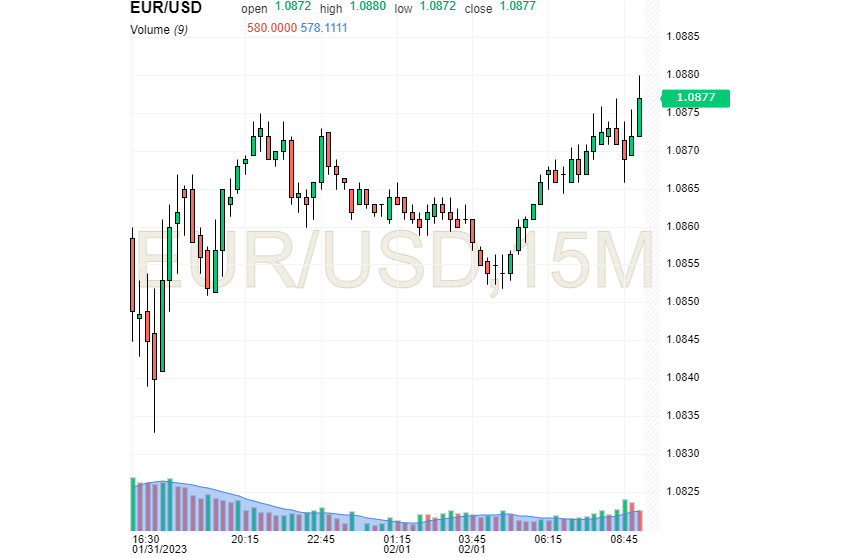

The U.S. currency has paused ahead of the Fed's decision on the key rate. The current pause has had little effect on the greenback and has cheered up the euro a bit. However, some analysts believe that the upcoming Fed rate decision will not only slow down the dollar for now but also in the near future.
The U.S. currency took a breather in the middle of the week, gaining strength ahead of the central bank's meeting. EUR/USD fell 0.03% to 1.0859. However, the euro eventually made up for lost time and outperformed the greenback. On Wednesday morning, February 1, EUR/USD was trading at 1.0877. The single currency was steady against the greenback, although it had noticeably weakened the day before. The reason was the sudden drop in the consumer confidence index for the U.S. economy. The index slipped to 107.1 points in January, down from 109 in December.

Currency strategists believe the bulls are running out of steam now, but they will get a second wind after the central bank's meeting. According to the technical chart, the pair bounced off the 21-day exponential moving average (EMA) but stays inside a three-month bearish pattern called the "rising wedge". However, the situation might change after the decision of the Federal Open Market Committee (FOMC) on the monetary policy.
According to experts, the key level of 1.0930, which was a barrier for the EUR/USD pair, was a major hurdle to overcome. However, attempts to overcome this barrier were unsuccessful. The stated wedge's top line surrounding 1.0965 could challenge the EUR/USD bulls. After overcoming this level there is talk about crossing the 1.1000 psychologically magnet, the analysts summarize.
The euro's current rise was caused by expectation of positive reports on inflation in the EU countries. The data on eurozone consumer prices will be published on Wednesday, February 1. According to preliminary estimates, the annual inflation rate in the EU will slow down to 9% in January. Note that at the end of December 2022 the figure was 9.2%. The euro will also be affected by the eurozone labor market report. According to analysts, the average unemployment rate in the EU countries (6.5%) will remain the same.
The US central bank's decision on the interest rate will be crucial. The markets expect it to rise by 25 bps to 4.5-4.75%. In addition, federal funds rate quotes are set to raise the key rate to a peak of 4.91%, which is expected in June. The rate is currently at 4.33%, and could fall to 4.48% later this year, by December.
Against this background, UBS economists expect further weakening of the greenback, which will alternate with short-term rises. This is contributed by the Fed's actions, which is close to the end of the cycle of rising rates. Currency strategists at UBS are confident of downward pressure on the dollar amid rising U.S. inflation in the first half of 2023.
However, their opponents suppose that the greenback will receive considerable support due to further growth of the interest rate. At the same time, experts claim a high probability of a hawkish surprise from the Fed on the back of the recent easing of financial conditions. According to analysts, this is an important argument in favor of raising rates. The current situation will determine the dollar's values, which depends on the economic forecasts of the central bank and the level of the key rate.
The markets are focused on the expectation that the rate hike will slow down by 25 bps. Such a decision may turn out to be a kind of a "stopcock" for USD, as currency strategists of Goldman Sachs believe. In addition, some analysts do not rule out another surprise from the Fed, expressed in a rate hike of 50 basis points at once. Take note that in case the central bank refuses to ease policy, the greenback may grow sharply.
According to experts, despite a relatively positive situation, there is a risk of a significant weakening of the dollar at the end of the meeting. Currency strategists at UBS pay attention to the achievement of the Fed's interest rate peak in the near future. Against this background a decline in inflation in the U.S. at a higher rate than in Europe is possible. In this situation, the risks of recession are increasing, analysts emphasize. "This is bad news for the dollar," they say in UBS. Experts believe that the U.S. currency will continue to correct in 2023, and its growth will slow down when the Fed stops raising rates.
Improving prospects for global economic growth supports other key currencies, especially the euro. According to analysts, the expectation of a global upturn in the second half of 2023 and early 2024 will help the euro grow and positively affect other currencies.